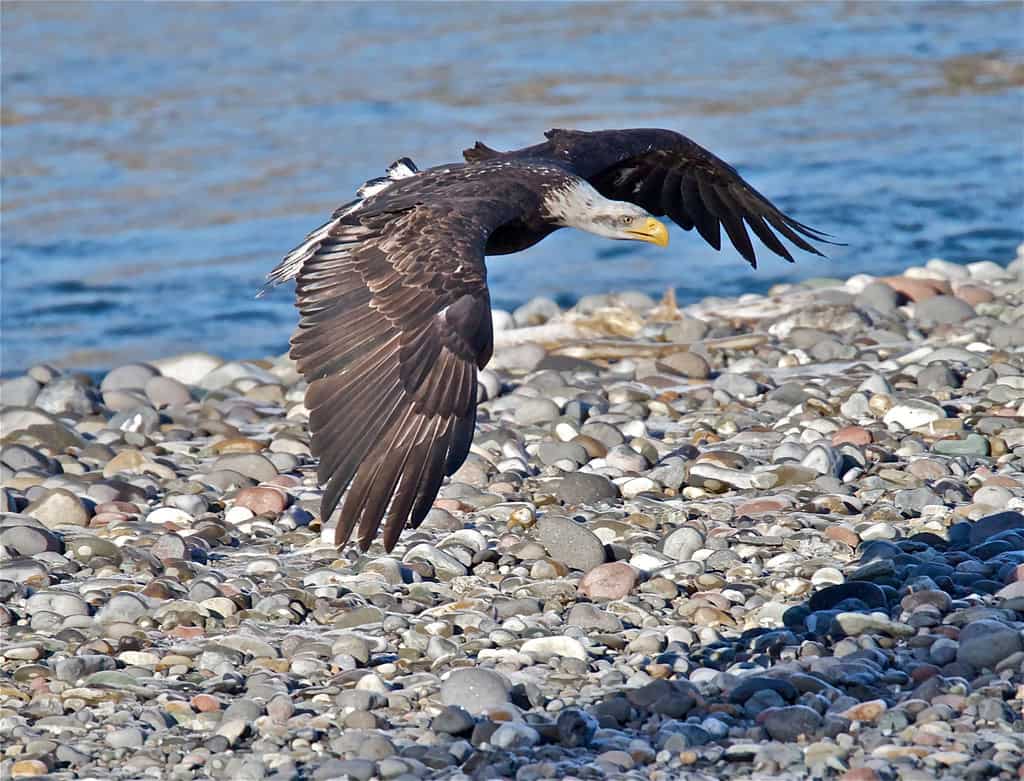As temperatures drop and landscapes transform under winter’s touch, something remarkable happens in many parts of North America – bald eagles become notably more visible. This isn’t just casual observation but a documented pattern that bird enthusiasts and casual observers alike have noted for generations. During the colder months, America’s national bird often appears in greater numbers and concentrates in areas where they might be sparse during warmer seasons.
This seasonal shift provides wildlife watchers with unprecedented opportunities to observe these majestic raptors in action. The winter eagle phenomenon creates natural spectacles in certain regions, where dozens or even hundreds of eagles might gather, creating breathtaking displays that draw photographers and nature lovers from across the country. Understanding why this happens reveals fascinating insights into eagle behavior, ecology, and evolutionary adaptations that have helped these iconic birds survive for millennia.
Migration Patterns of Northern Populations
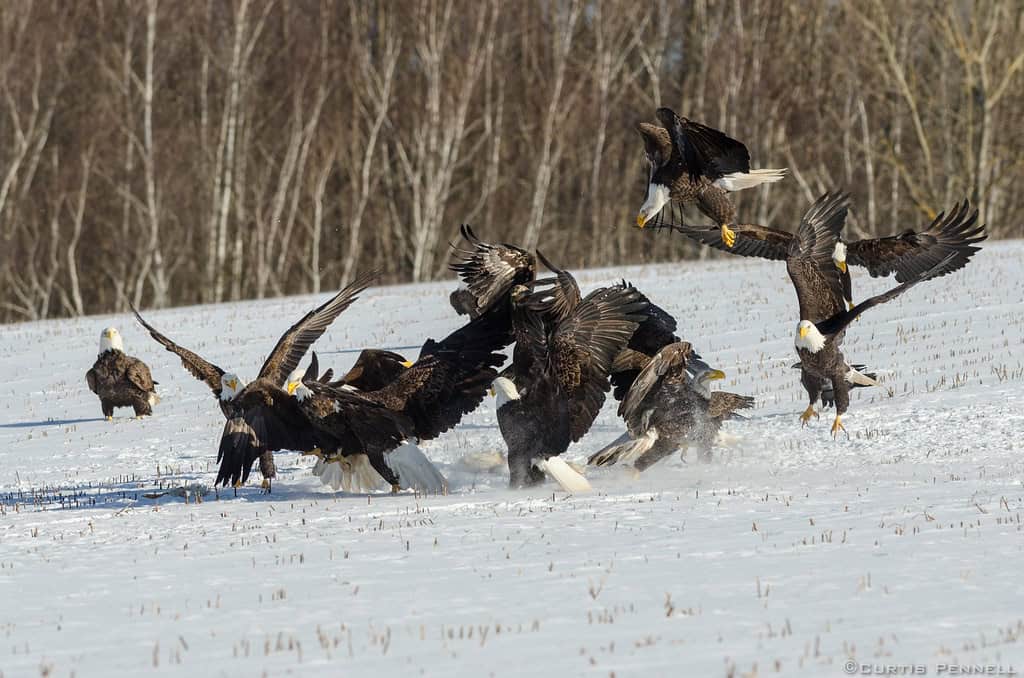
Bald eagles that nest in northern Canada and Alaska typically migrate southward as winter sets in. These northern populations cannot access their usual food sources when lakes and rivers freeze over, forcing them to move to regions where water remains open and prey is accessible. Tracking studies have shown that some eagles travel hundreds or even thousands of miles during these seasonal movements, following ancient migratory pathways that have been used for countless generations.
This influx of northern eagles into more southern territories significantly increases the overall eagle population in the continental United States during winter months. States like Washington, Minnesota, Iowa, Illinois, and Missouri see dramatic increases in their eagle populations between November and March. For example, the Upper Mississippi River National Wildlife and Fish Refuge, which spans parts of Minnesota, Wisconsin, Iowa, and Illinois, might host just a few dozen nesting pairs in summer but welcomes more than 2,500 bald eagles during peak winter periods.
Concentration Around Open Water

During winter, eagles become much more concentrated around remaining open water sources. When most lakes and rivers freeze, eagles must find areas where water remains accessible, typically including dam tailwaters, power plant discharge areas, river confluences, and fast-moving water that resists freezing. These limited open water areas force eagles to gather in higher densities than they would typically tolerate during breeding season when they maintain exclusive territories.
This concentration effect makes eagles far more visible to human observers. A single unfrozen section of river might attract dozens of eagles that would otherwise be spread across hundreds of square miles during warmer months. The Mississippi River, for instance, hosts impressive concentrations of eagles below dams where turbulent waters remain ice-free. The viewing opportunities become so reliable that many wildlife agencies organize eagle watching events and festivals during winter months, knowing that these magnificent birds will be present in predictable locations.
Food Availability and Hunting Strategies

Winter radically changes food availability for bald eagles, forcing them to adapt their hunting strategies. Fish, which make up a significant portion of their diet during warmer months, become less accessible when water bodies freeze. This prompts eagles to become more opportunistic, increasing their focus on waterfowl, small mammals, and carrion. Winter-weakened or injured animals provide an important food source, as do animals that have succumbed to harsh weather conditions.
The eagles’ scavenging behavior becomes more prominent in winter, making them more likely to gather around sources of carrion such as winter-killed deer or fish die-offs. When fish become concentrated in smaller areas of open water, eagles can also take advantage of these dense prey populations. Their hunting often becomes more social during these periods, with multiple eagles gathering where food is abundant – creating impressive spectacles that are rarely seen during breeding season when pairs defend exclusive territories from other eagles.
Leafless Trees Improve Visibility

The winter landscape itself plays a crucial role in making bald eagles more visible to human observers. Deciduous trees shed their leaves, revealing eagle nests, perches, and the birds themselves that might otherwise be obscured by dense foliage during spring and summer months. An adult bald eagle with its distinctive white head and tail stands out dramatically against bare branches and gray winter skies, making them easier to spot even from considerable distances.
This improved visibility is especially significant for wildlife watchers and photographers. Eagles frequently perch in large trees along waterways to rest and scan for prey, positions that become much more exposed during winter. Their preference for prominent perches with good sightlines to hunting areas means they often select trees and positions that are naturally visible from roads and observation points. Conservation organizations and wildlife agencies leverage this winter visibility advantage when planning eagle viewing events and citizen science counts.
Breeding Season Preparation

Bald eagles are among North America’s earliest nesting birds, with pairs in many regions beginning their breeding activities during winter months. In the southern United States, eagles may start nest building or repair as early as November or December, while even in northern states, courtship and nest preparation often begin by January or February. This timing places eagles in prominent locations during winter as they engage in dramatic courtship displays and defend nesting territories.
The courtship behavior of bald eagles includes spectacular aerial displays where pairs lock talons and cartwheel through the air, sometimes plummeting hundreds of feet before separating. These displays typically occur in open areas where they’re more visible to human observers. Additionally, the nest-building activities draw attention as eagles carry large sticks to their massive nests, which can weigh up to a ton and measure 6-8 feet in diameter. These winter breeding behaviors increase the likelihood of eagle sightings during the colder months.
Winter Congregation Areas
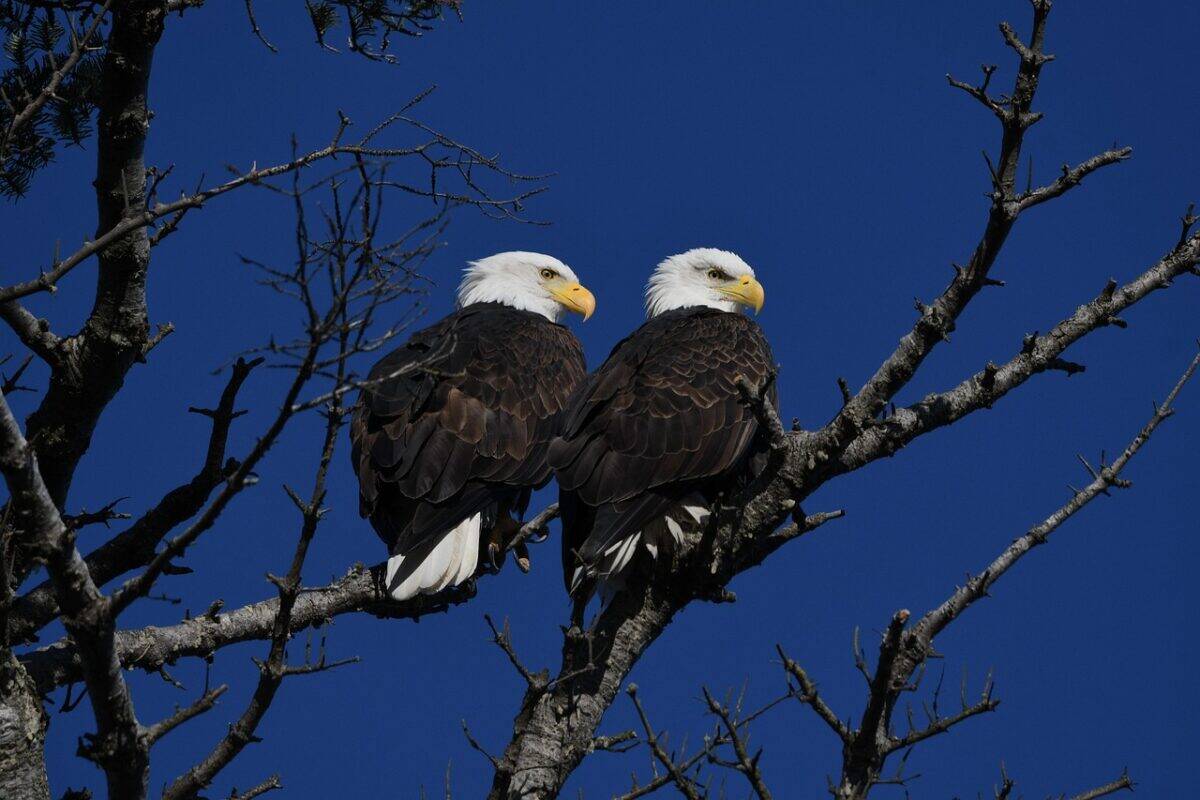
Certain locations have become famous for their winter eagle concentrations, drawing thousands of visitors annually. The Chilkat Bald Eagle Preserve near Haines, Alaska, hosts the world’s largest concentration of bald eagles, with over 3,000 individuals gathering during fall and early winter to feed on a late salmon run. Other notable hotspots include the Klamath Basin on the California-Oregon border, the Upper Mississippi River valley, the upper reaches of the Chesapeake Bay, and various reservoirs and dams throughout the Midwest and Pacific Northwest.
These congregation areas have become important economic drivers for local communities, with eagle-watching tourism generating significant revenue during otherwise slow visitor seasons. For example, the small town of Klamath Falls, Oregon, sees thousands of visitors during its annual Winter Wings Festival, focused largely on the spectacular concentration of bald eagles that gather there. Similar eagle-focused events in places like LeClaire, Iowa; Sauk Prairie, Wisconsin; and Sheffield Mills, Nova Scotia have become important fixtures in winter tourism calendars.
Eagles’ Winter Adaptations

Bald eagles have evolved impressive physiological adaptations that allow them to thrive in cold winter conditions. Their dense plumage provides excellent insulation, with an estimated 7,000 feathers covering their bodies. They can reduce heat loss by tucking their unfeathered legs and feet into their warm belly feathers when perched. Their large body size relative to surface area also helps them retain body heat more efficiently than smaller birds, allowing them to remain active even in extremely cold conditions.
Eagles possess specialized counter-current heat exchange systems in their legs that minimize heat loss while standing on ice or in cold water. Blood vessels carrying warm blood from the body run parallel to vessels carrying cold blood from the extremities, allowing heat to transfer between them. This adaptation keeps the core body temperature stable while minimizing the energy required to warm blood returning from the extremities. These adaptations not only help eagles survive winter conditions but also enable them to remain active and visible throughout the coldest months.
Population Recovery and Range Expansion

The increased winter visibility of bald eagles is partially attributable to their remarkable population recovery. Once endangered, with only 417 nesting pairs in the continental United States in 1963, bald eagles have made an extraordinary comeback. By 2021, the population had grown to an estimated 316,700 individual bald eagles, including more than 71,400 nesting pairs. This dramatic increase means there are simply more eagles to be seen across a much broader range than just a few decades ago.
As eagle populations have recovered, they’ve also expanded their winter range. Areas that historically saw few or no eagles during winter now host regular populations. Climate change has also influenced winter distribution patterns, with some eagle populations shifting their ranges or altering traditional migration patterns as winters become milder in northern regions. These population and range expansions have dramatically increased the opportunities for people across North America to observe bald eagles during winter months.
Winter Eagle Watching Tips

To maximize your chances of seeing bald eagles in winter, focus on early morning hours when eagles are most active. Look for them near unfrozen bodies of water, particularly below dams, at river confluences, and around power plant outflows where warm water keeps ice at bay. Eagles often perch in tall trees along shorelines, scanning for fish or waterfowl. During midday, watch for eagles soaring on thermal updrafts, using minimal energy to patrol large areas for potential food sources.
Proper equipment enhances the experience considerably. Binoculars with 8x or 10x magnification are ideal for eagle watching, while spotting scopes allow for detailed observation from comfortable distances that don’t disturb the birds. Dress in warm, quiet clothing with neutral colors, and move slowly to avoid startling these sometimes wary birds. Many wildlife refuges and state parks offer guided eagle watches during winter months, providing access to known hotspots and expert knowledge that can greatly improve your chances of memorable eagle encounters.
Conservation Implications of Winter Concentrations

The concentrated nature of winter eagle populations has important conservation implications. These gatherings create both vulnerabilities and opportunities for eagle protection. When large numbers of eagles depend on relatively small areas of habitat during winter months, these sites become critically important for conservation. Disturbance, pollution, or habitat alteration at these locations can affect disproportionately large segments of the eagle population, making the protection of winter congregation areas a conservation priority.
Conversely, these concentrations also create opportunities for monitoring population health, studying behavior, and building public support for conservation. Winter eagle watches and citizen science programs like the Midwinter Bald Eagle Survey help researchers track population trends and identify important habitat areas. The public visibility of eagles during winter also generates enthusiasm for conservation efforts, as people who experience the thrill of seeing these magnificent birds firsthand often become advocates for their protection and for broader conservation initiatives.
Eagles as Winter Wildlife Ambassadors
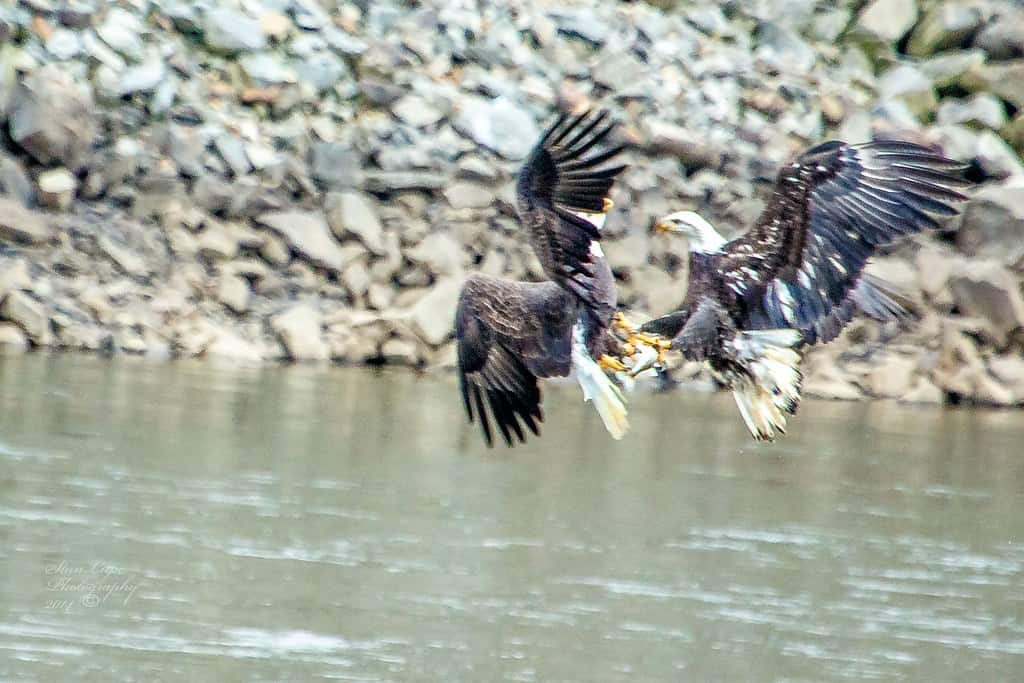
Perhaps the most profound impact of winter eagle visibility is the bird’s role as an ambassador for wildlife conservation and environmental protection. The bald eagle’s recovery from the brink of extinction represents one of America’s greatest conservation success stories. When people observe these magnificent birds in winter settings, they witness living proof that conservation efforts can succeed, even for species once in serious danger of disappearance. This visible success story helps build public support for broader conservation initiatives.
The seasonal visibility of eagles also creates important educational opportunities. Winter eagle watches introduce thousands of people annually to concepts of migration, adaptation, and ecosystem health. Many participants in these events have their first meaningful nature experiences while eagle watching, sparking lifelong interests in wildlife and conservation. For children especially, seeing a bald eagle in the wild can create a defining moment that shapes their relationship with the natural world and influences their future environmental awareness and activism.
The Continuing Wonder of Winter Eagles
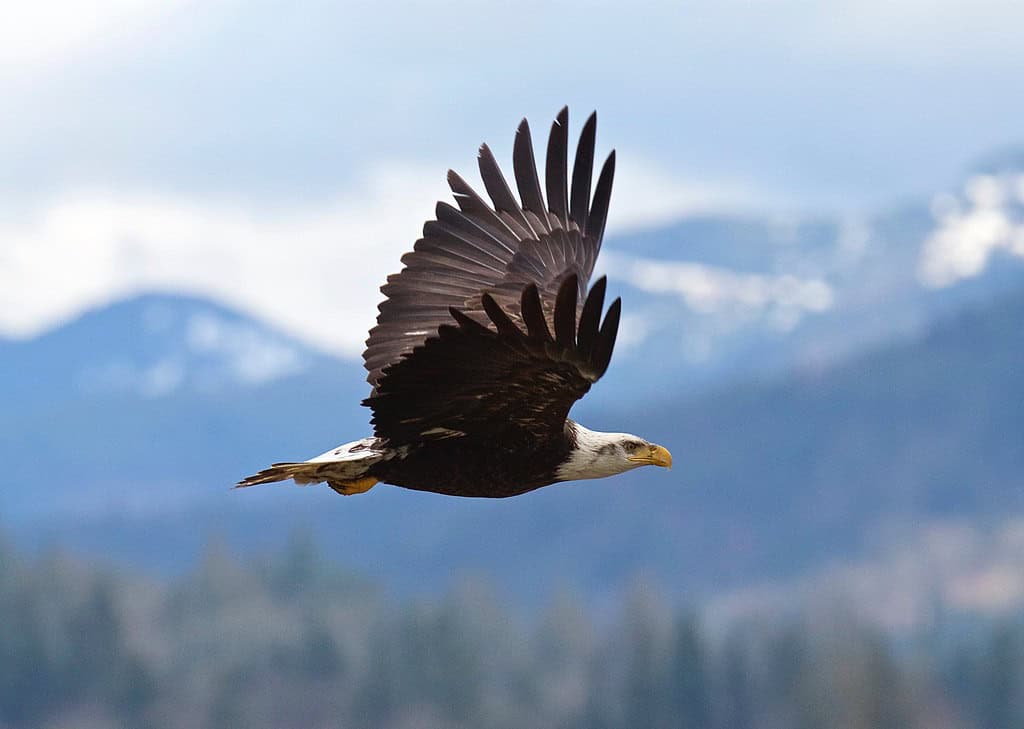
The increased visibility of bald eagles during winter months represents a remarkable convergence of biological, ecological, and behavioral factors that create special wildlife viewing opportunities. Through their migration patterns, adaptations to cold, concentrated feeding behaviors, and breeding cycle timing, these magnificent birds offer us a window into the complex adaptations that enable wildlife to survive and thrive in challenging conditions. Their winter presence reminds us of nature’s resilience and the interconnectedness of ecosystems across vast landscapes.
As climate change alters traditional patterns and human development continues to impact natural areas, monitoring and protecting winter eagle populations and their habitats becomes increasingly important. The special opportunity to observe eagles during winter connects us to both our natural heritage and our conservation responsibilities. Whether you’re a dedicated birder with high-end optics or simply someone who pauses to watch an eagle soaring overhead on a winter day, these encounters with America’s national bird create lasting memories and strengthen our collective commitment to ensuring these magnificent raptors continue to grace our winter skies for generations to come.
- Why You’re More Likely to See Bald Eagles in Winter - August 13, 2025
- The Most Gigantic Grizzly Bear Ever Caught on Camera in the US - August 13, 2025
- How Animals Express Emotions: What Scientists Are Discovering - August 13, 2025

